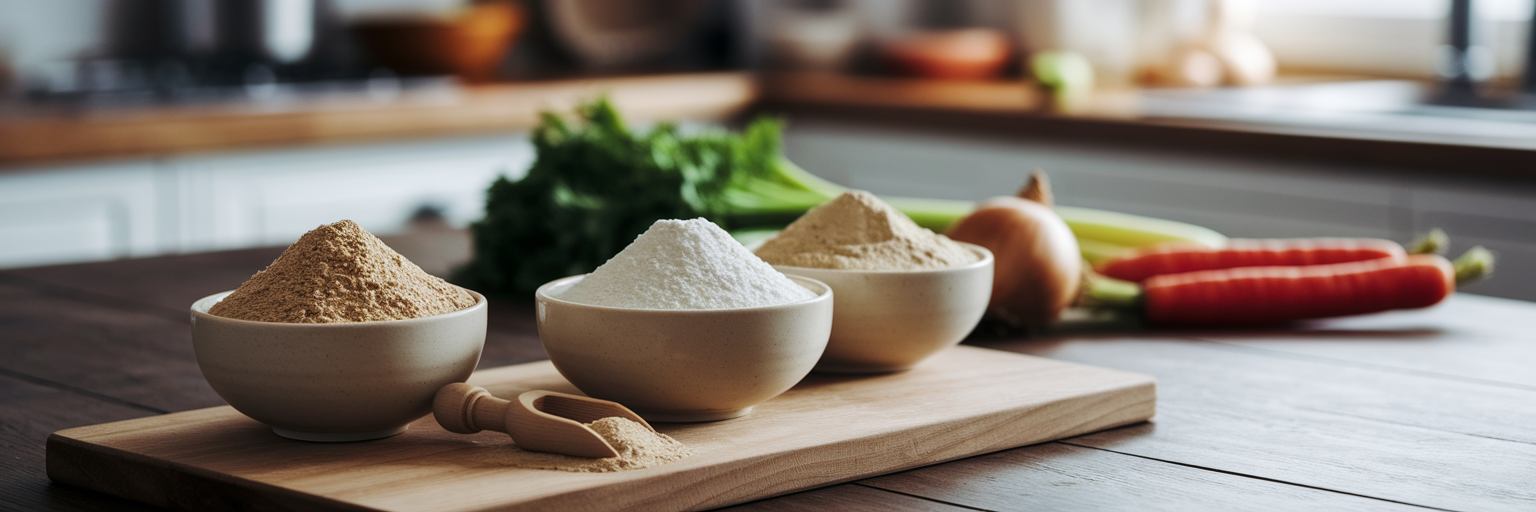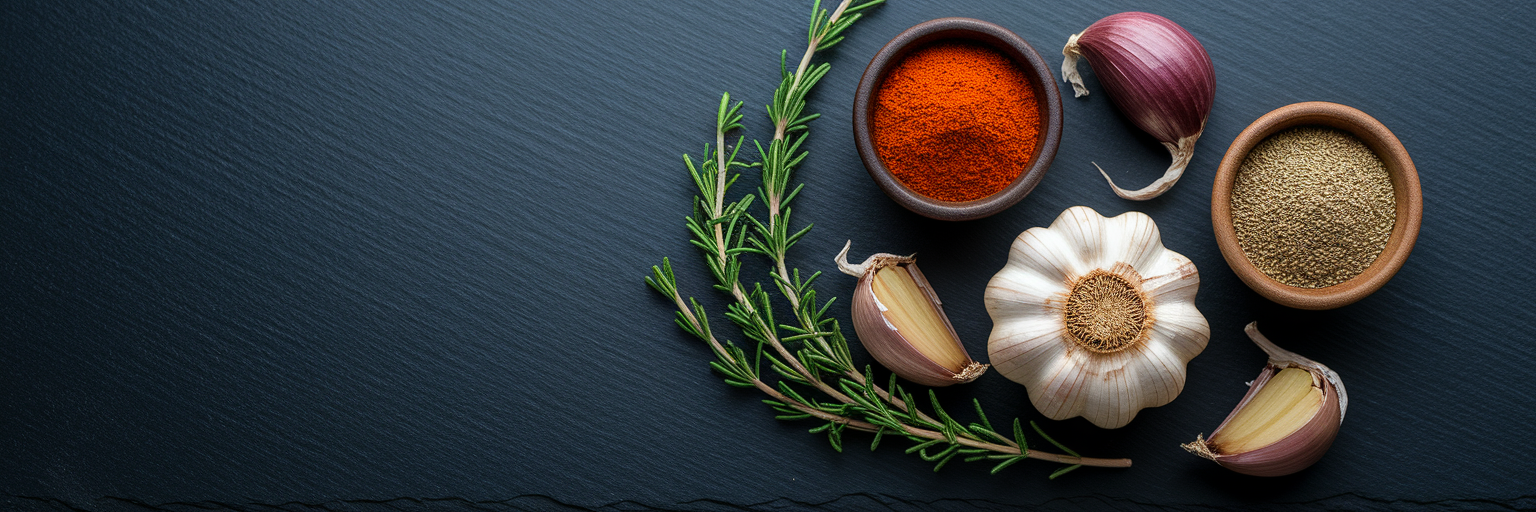More Than Just Shakes: Savory Soups for Your Protein Goals
If you’re on a plant-based diet, you probably know the routine: another day, another protein shake. While they’re convenient, that feeling of “shake fatigue” is real. We all crave warm, comforting meals, but hitting daily protein targets with savory dishes can feel like a puzzle, especially for those of us in the US trying to balance nutrition and flavor.
What if you could turn your favorite comforting soup into a protein powerhouse? It’s not only possible, but it’s also surprisingly simple. Using vegan protein powder in soups is an effective way to create satisfying savory protein powder meals without much extra effort. Forget chalky textures or weird aftertastes. We’re here to show you how to do it right.
This guide will walk you through everything you need to know. We’ll cover how to pick the right powder, master the technique for a perfectly smooth consistency, and create delicious, balanced flavors. Get ready to transform your soup game and meet your protein goals with meals you’ll genuinely look forward to.
Choosing the Best Vegan Protein Powder for Cooking

The secret to delicious high-protein vegan soups starts long before you turn on the stove. It begins with selecting the right protein powder. Not all powders are created equal, and the one you use for your post-workout shake is likely not the one you want in your tomato soup. The goal is to boost nutrition without disrupting the flavor and texture you love.
Unflavored is Your Best Friend
This is the most important rule. Imagine a scoop of vanilla or chocolate-flavored powder in your savory lentil soup. It just doesn’t work. Unflavored protein powder is your non-negotiable starting point for cooking. It provides a neutral base that won’t clash with your garlic, onions, and spices, allowing the authentic flavors of your soup to shine through.
The Top Protein Sources for Savory Soups
When you're looking at unflavored options, the source of the protein matters. Pea, rice, and multi-source blends are generally the best protein powder for cooking because of their mild taste profiles. Pea protein tends to be creamy and works well in hearty, thick soups. Rice protein is lighter and great for thinner, puréed soups. Blends are often formulated for excellent solubility and a balanced, neutral flavor, making them incredibly versatile.
What to Look for on the Label
When you’re scanning labels, look for a short ingredient list. The best options have minimal ingredients with no added sugars or artificial sweeteners like sucralose or stevia, which can add an unwanted sweet note. Good solubility is also key to avoiding a gritty or chalky mouthfeel. Understanding the differences is important, and for those wanting to compare options, exploring insights on the best protein powders we recommend can provide a clearer picture.
| Protein Type | Taste Profile | Texture When Blended | Best For... |
|---|---|---|---|
| Pea Protein | Mildly earthy, neutral | Creamy and thick | Hearty lentil, split pea, or potato soups. |
| Rice Protein | Very neutral, slightly grainy if not well-blended | Lighter, less thick | Pureed vegetable soups like tomato or carrot. |
| Multi-Source Blend | Balanced and neutral (designed to be) | Often very smooth and soluble | Versatile for almost any soup, especially creamy ones like mushroom or squash. |
The Secret to a Perfectly Smooth and Creamy Texture
We’ve all had that grainy protein shake that makes you want to give up. The fear of ruining a perfectly good pot of soup with a chalky texture is valid, but completely avoidable. The solution lies in technique. Mastering how to use protein powder in soup is all about how and when you add it. Dumping a dry scoop directly into hot liquid is a recipe for clumps. Instead, follow this simple method for a flawlessly smooth result every time.
- Create a Slurry First: This is the most critical step. In a separate small bowl, whisk your scoop of protein powder with about a half-cup of cool or room-temperature liquid. You can use water, plant-based milk, or a bit of the soup broth you’ve set aside to cool. Whisk until it forms a smooth, lump-free paste, similar to a pancake batter. This pre-dissolves the powder, preventing it from clumping when it hits the heat.
- Timing is Everything: Never add the protein slurry to a boiling soup. High heat can cause the protein to denature, or "cook," which creates a grainy texture and can diminish its nutritional value. The best time to add your slurry is at the very end of the cooking process. Take the pot off the heat, or turn the burner to its lowest setting, and then slowly stir in the slurry.
- Blend for Perfection: For a truly seamless integration, an immersion (stick) blender is your best tool. Simply place it directly into the pot and blend for 30-60 seconds until the soup is silky smooth. If you’re making a puréed soup like butternut squash or tomato and want an ultra-velvety texture, you can transfer the soup to a high-speed blender after adding the slurry.
Soups with a naturally thick base, like those made with potatoes, lentils, or cauliflower, are especially forgiving. Their hearty texture does an excellent job of masking any minor changes, making them a great place to start your experiments. As culinary experts and publications explore new formulations, solubility is becoming a major focus. A recent report from Fortune on the best protein powders highlighted that brands are increasingly creating blends with superior solubility specifically for uses like cooking.
Mastering Flavor Without the Protein Aftertaste

You’ve chosen an unflavored powder and perfected the slurry method for a smooth texture. The final piece of the puzzle is ensuring your soup tastes like, well, soup—not a health supplement. Even the most neutral protein powders can have a subtle earthy note. The key is to build a robust flavor profile that completely envelops and harmonizes with the protein, rather than just trying to cover it up.
Think of it as building a flavorful foundation. This is a common challenge, and as a popular Reddit thread in r/fitmeals shows, home cooks have all sorts of tricks for masking protein tastes in shakes. The same principle applies to savory dishes, just with different ingredients. Here are some tips for creating delicious high-protein vegan soups:
- Aromatics are Key: Don’t skimp on the base flavors. Start with a generous amount of sautéed onion and roasted garlic. Nutritional yeast is another fantastic addition, bringing a savory, cheesy, umami-rich note that works wonders in creamy soups.
- Embrace Spices: Be bold with your seasonings. Warm, aromatic spices like smoked paprika, cumin, and curry powder don't just add their own flavor; they integrate with the protein’s subtle notes. A pinch of cayenne or black pepper can also add a layer of complexity.
- Add Creaminess and Richness: A swirl of fat at the end can beautifully smooth out the entire flavor profile. A splash of full-fat coconut milk, a drizzle of extra virgin olive oil, or a spoonful of cashew cream adds a richness that balances everything perfectly.
By focusing on these flavor-building blocks, you create a soup so delicious that the protein boost becomes an invisible benefit. For more culinary ideas, you can always find inspiration on our blog.
Three Easy High-Protein Vegan Soup Recipes
Ready to put these techniques into practice? These simple vegan protein powder recipes are designed for flavor, creaminess, and a serious protein boost. Each one uses a different flavor profile to show just how versatile this method can be.
Creamy Curried Red Lentil Soup
The bold, warm spices in this soup are a perfect match for a neutral protein powder, while the lentils create a naturally thick and hearty base.
Key Ingredients: Red lentils, onion, garlic, ginger, curry powder, canned coconut milk, and one scoop of unflavored pea protein.
Steps: Sauté aromatics, add spices, lentils, and broth. Simmer until lentils are soft. Remove from heat, create a slurry with the protein powder and a little water, and stir it in along with the coconut milk.
Pro Tip: For the smoothest texture, use an immersion blender right in the pot after adding the protein slurry.
Hearty Mushroom & Wild Rice Soup
The deep, umami flavor of mushrooms is fantastic for masking any subtle protein notes. This soup is earthy, savory, and incredibly satisfying.
Key Ingredients: Cremini mushrooms, wild rice, vegetable broth, thyme, and one scoop of an unflavored protein blend.
Steps: Cook wild rice separately. Sauté mushrooms and onions until deeply browned. Add broth and thyme, then simmer. Off the heat, blend the soup base until partially creamy. Stir in the protein slurry and the cooked wild rice.
Pro Tip: Adding the slurry before the cooked rice ensures the base is perfectly smooth while the rice provides a nice textural contrast.
Roasted Butternut Squash & Sage Soup
The natural sweetness of roasted butternut squash pairs beautifully with a mild protein powder, and fresh sage adds a fragrant, savory touch.
Key Ingredients: Butternut squash, onion, fresh sage, vegetable broth, a touch of nutmeg, and one scoop of unflavored rice or pea protein.
Steps: Roast squash until tender. Sauté onion and sage, then add the roasted squash and broth. Simmer briefly, then blend until completely smooth. Remove from heat, stir in the protein slurry, and season with nutmeg.
Pro Tip: Roasting the squash first caramelizes its sugars, creating a deeper, richer flavor that easily complements the protein.
Feeling inspired to try more? Check out these other easy vegan protein recipes you’ll actually crave.
Taking Your Savory Protein Creations Further
Once you’ve mastered adding protein to soups, you’ll see opportunities everywhere. This simple slurry technique isn’t just for soup. You can use it to thicken and boost the protein content of so many other savory dishes. Think about stirring a slurry into a simmering pot of chili, a vegetable curry, or even a creamy pasta sauce just before serving.
Want to get even more creative? Try making savory protein-boosted biscuits to serve alongside your soup. You can even add a small amount of unflavored powder to the breading for baked tofu or to homemade veggie burger patties. The possibilities for savory protein powder meals are truly endless once you stop thinking of protein powder as just for shakes.
We encourage you to experiment in the kitchen and discover what works for you. Share your creations with us on social media! If you’re ready to start your culinary journey, explore our collection of unflavored vegan proteins that are perfect for cooking.



